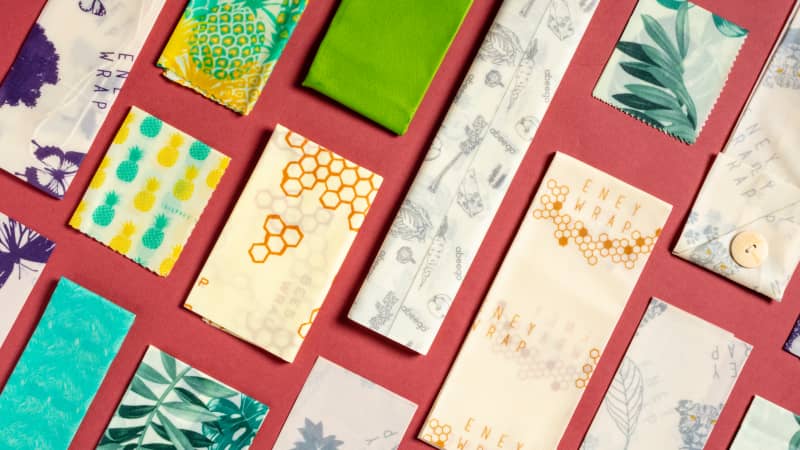The Best Reusable Storage Bags
Equipment Review
Food wraps coated with beeswax and other natural ingredients are marketed as environmentally friendly alternatives to plastic wrap. How well do they work?
Published Nov. 13, 2020. Appears in America's Test Kitchen TV Season 22: Holiday Dessert and Salad

Using plastic wrap to keep foods fresh is convenient, but as a single-use product destined for the landfill, plastic wrap can be wasteful, and its tendency to get tangled and stick to itself can make it frustrating to use. Reusable food wraps—sheets of cotton or hemp dipped in a layer of beeswax or soy wax—are an increasingly available alternative. Manufacturers advertise that these wraps are as effective as traditional plastic wrap at keeping food fresh. They can be wrapped directly around food or used to seal bowls and other containers. To use them, you fold and overlap the material and press firmly to adhere the wrap. When you’re done, you can clean them with a bit of soap and water, store them, and reuse them. The wraps gradually lose their clinging ability over time and can then be cut into strips and composted or even used as simple fire starters. According to most manufacturers, they're good for about a year of regular use. We tested six sets, priced from about $3 to about $6 per wrap, against one another and our winning plastic wrap to see which would perform the best.
We evaluated the wraps’ versatility by using them to cover bowls of various materials and sizes. We checked their clinging ability by vigorously shaking bowls that we’d filled with grapes and sealed. We compared the wraps’ food storage effectiveness by using them to wrap and store loaves of bread and halved lemons, avocados, and onions, checking if they retained odors. We crushed blackberries onto them to see if they stained. Finally, we washed each wrap more than 10 times—by hand, since none were dishwasher-safe—to get a sense of its durability. We were looking for a wrap set that preserved food well, was easy to use and clean, and held up to consistent use over time.
These wraps’ success depends on how well they can adhere—both to themselves and to containers. Each wrap’s components are very similar: fabric dipped in beeswax or soy wax, as well as jojoba oil, coconut oil, and/or tree resin for added stickiness and flexibility. Manufacturers were reticent to disclose their exact formulas, but we noticed some differences in texture and clinging ability that suggested that companies use different proportions of wax, oil, and tree resin. Two of the wraps were extremely sticky and malleable. They folded and stuck well to themselves and the bowls we tried them on, creating seals that held fast during the grape test. But there was a downside to those supersticky wraps. While all left some oily residue on our hands and the bowls’ rims, the especially sticky wraps left gunky, waxy residue everywhere. We were able to easily scrub awa...

The mission of America’s Test Kitchen Reviews is to find the best equipment and ingredients for the home cook through rigorous, hands-on testing. We stand behind our winners so much that we even put our seal of approval on them.

Chase is an associate editor for ATK Reviews. He's an epidemiologist-turned-equipment tester and biscuit enthusiast.

This is a members' feature.